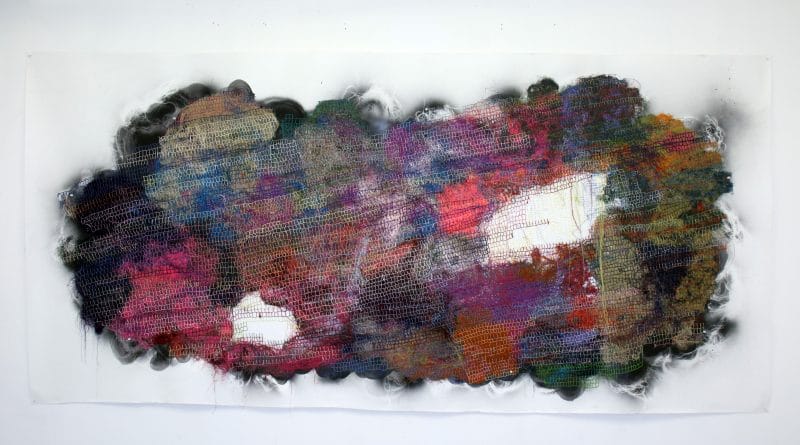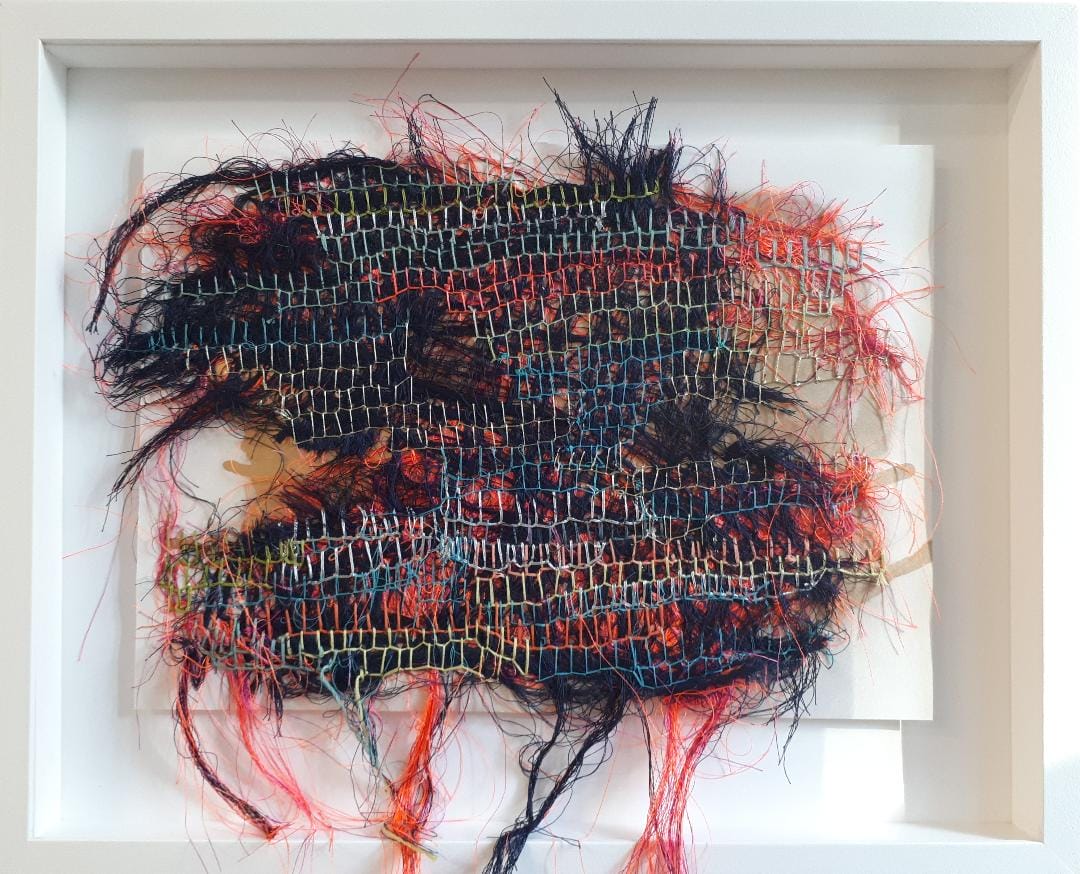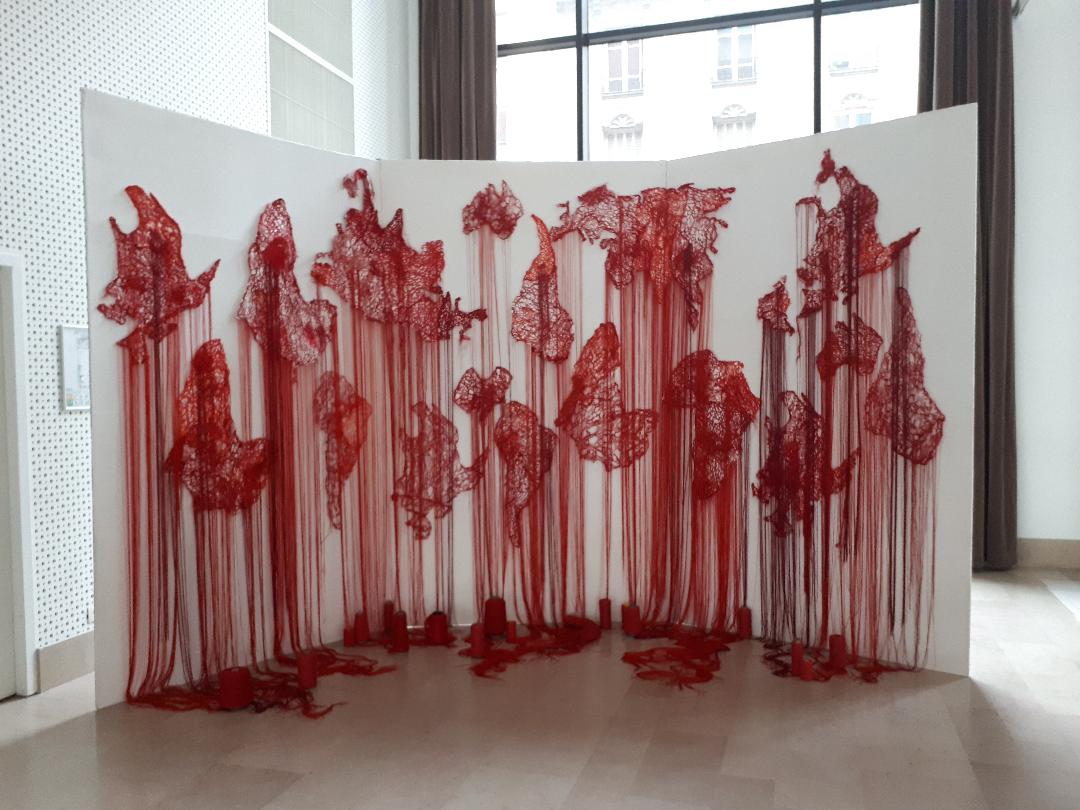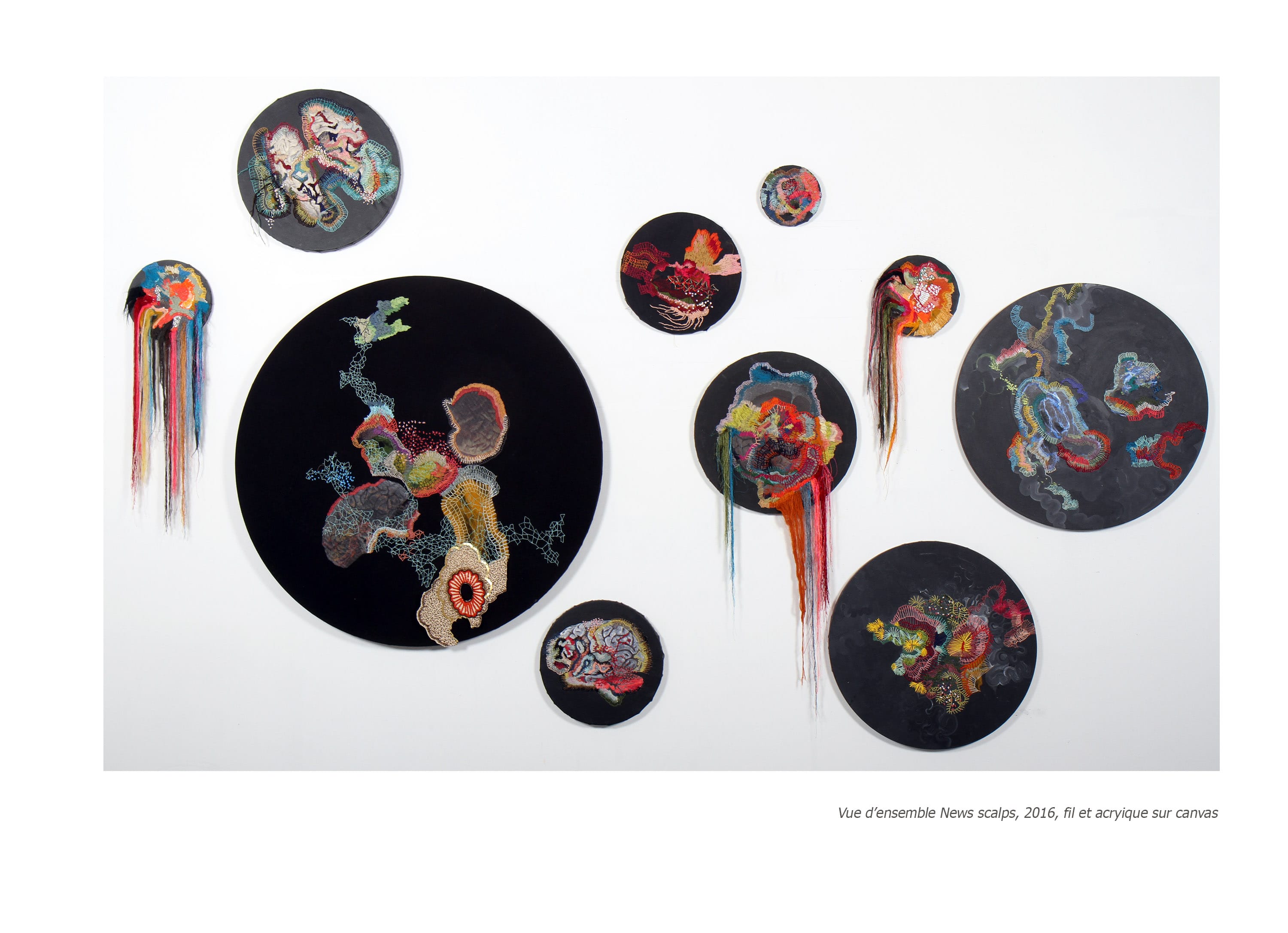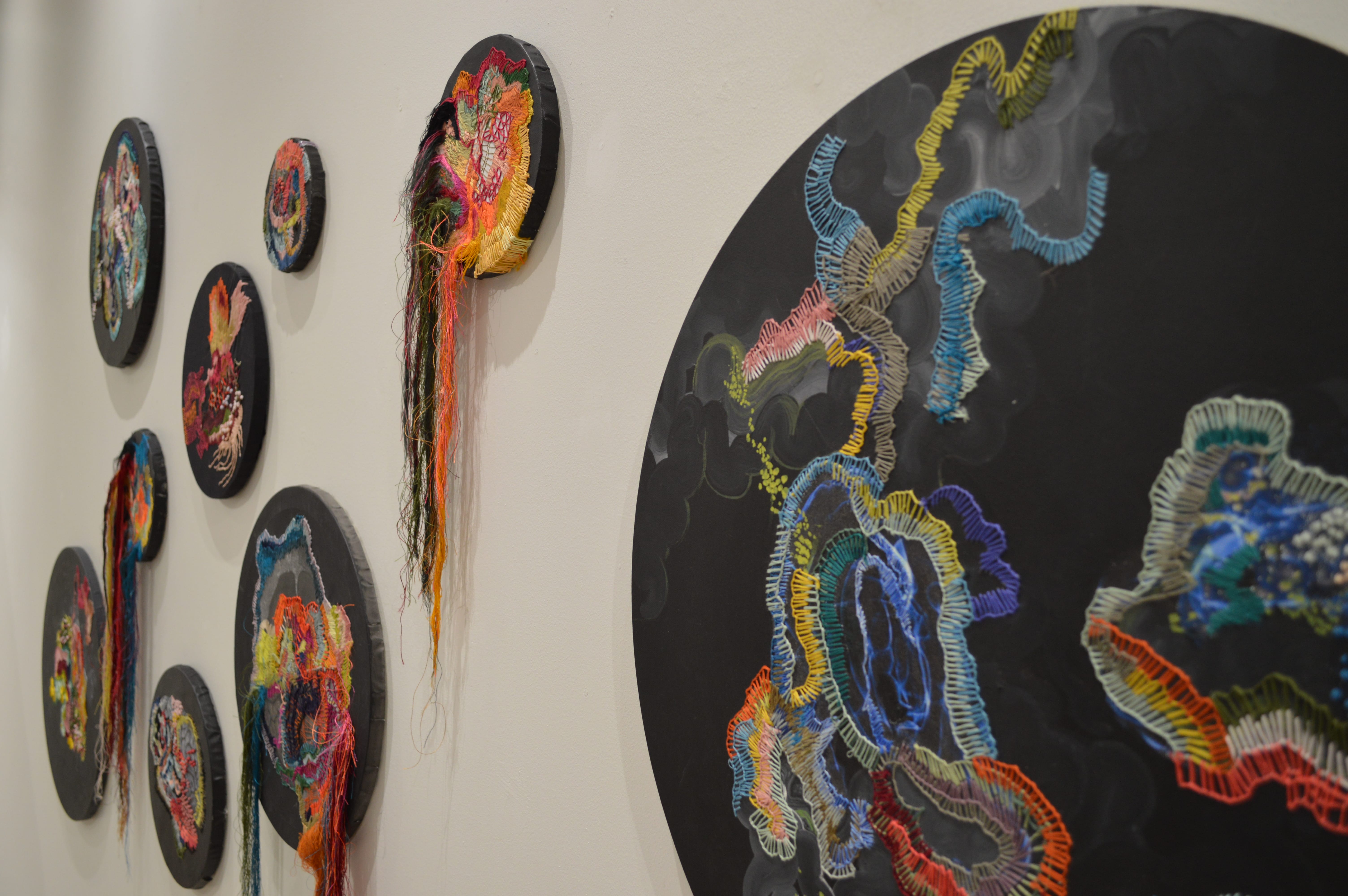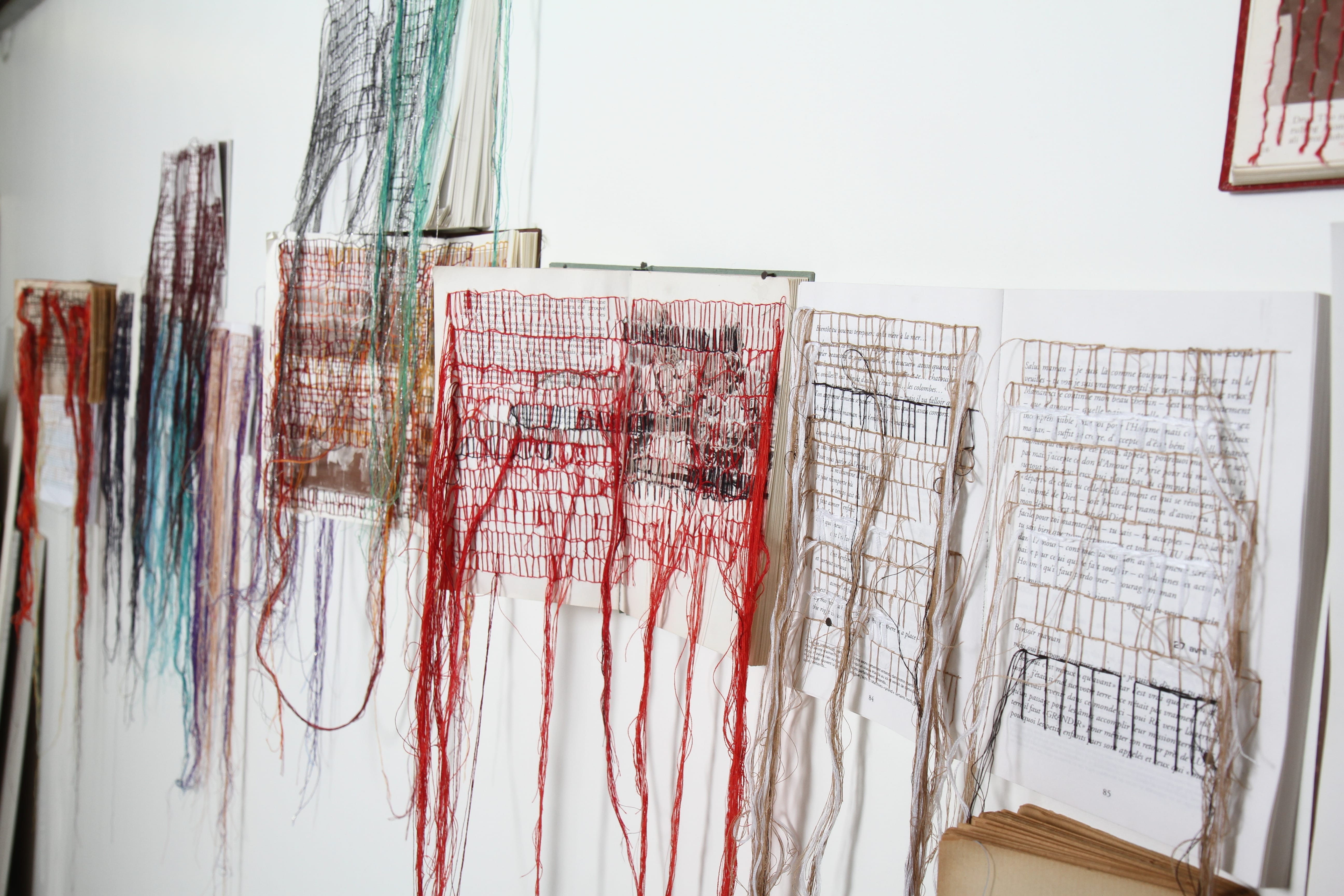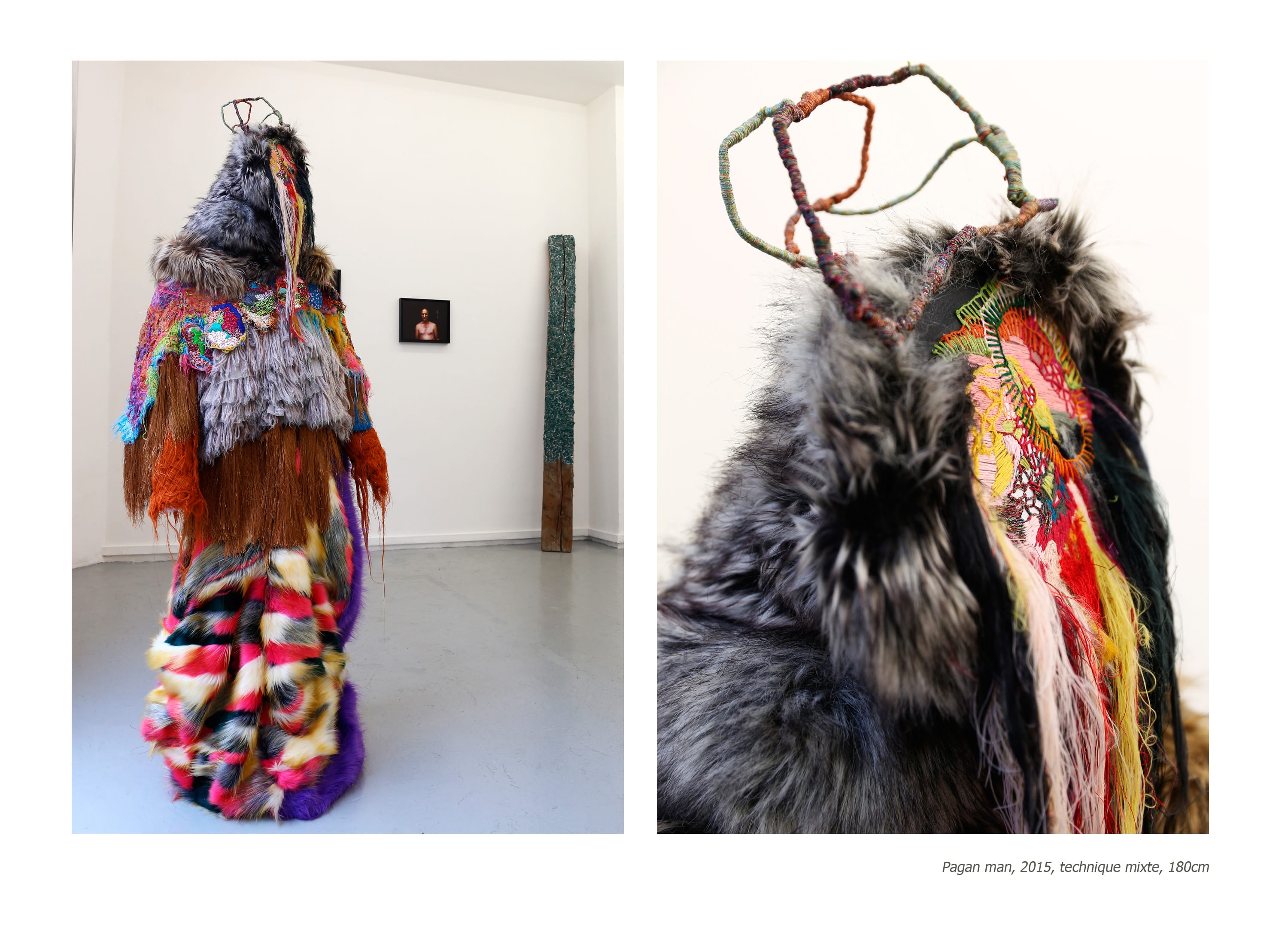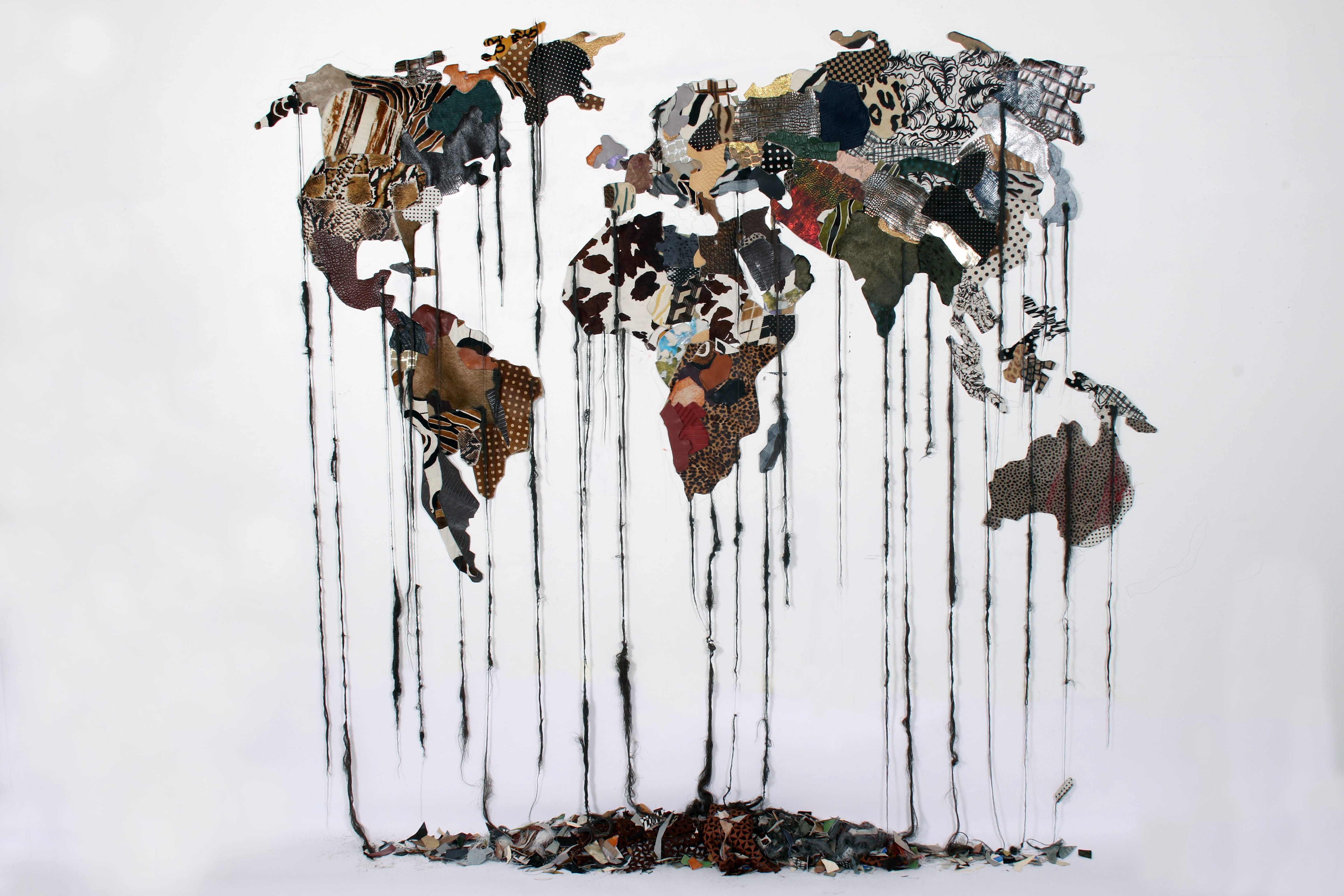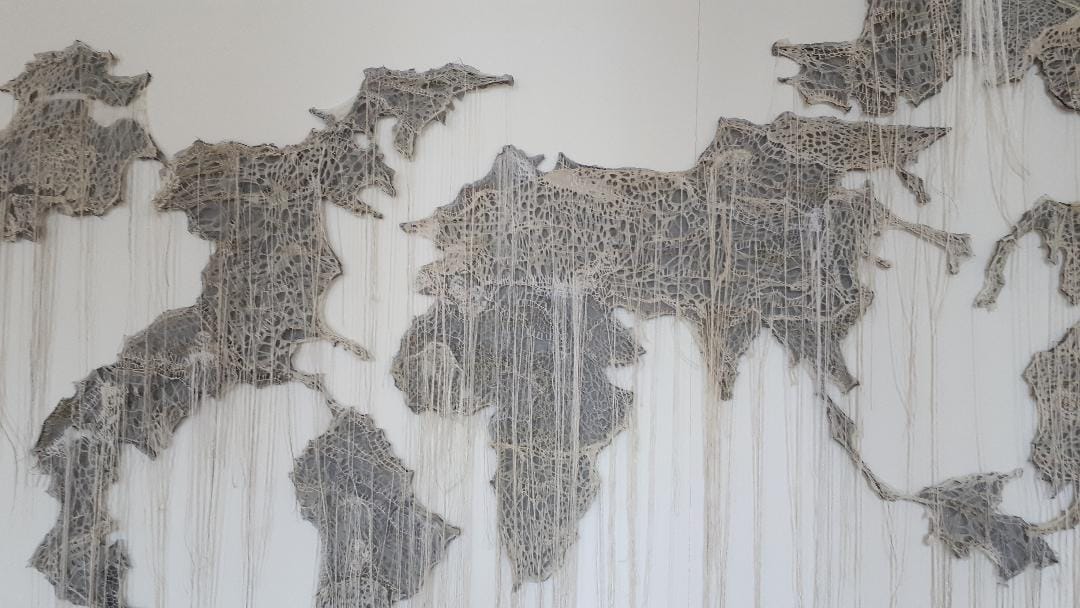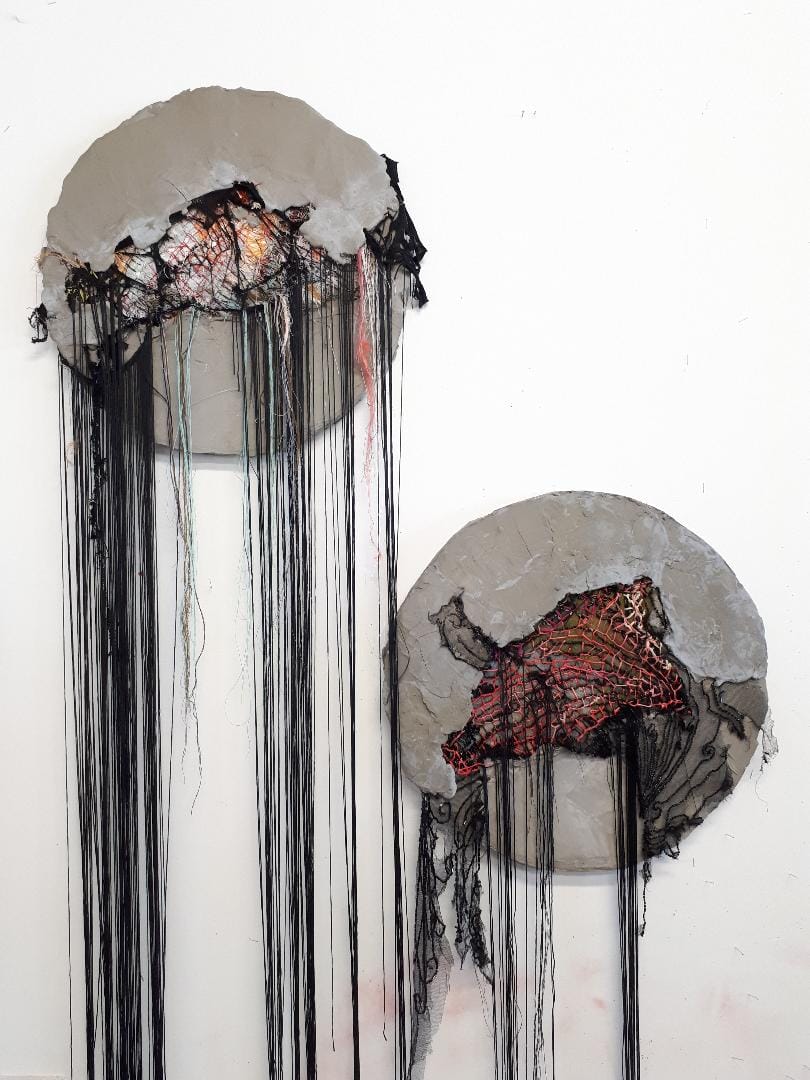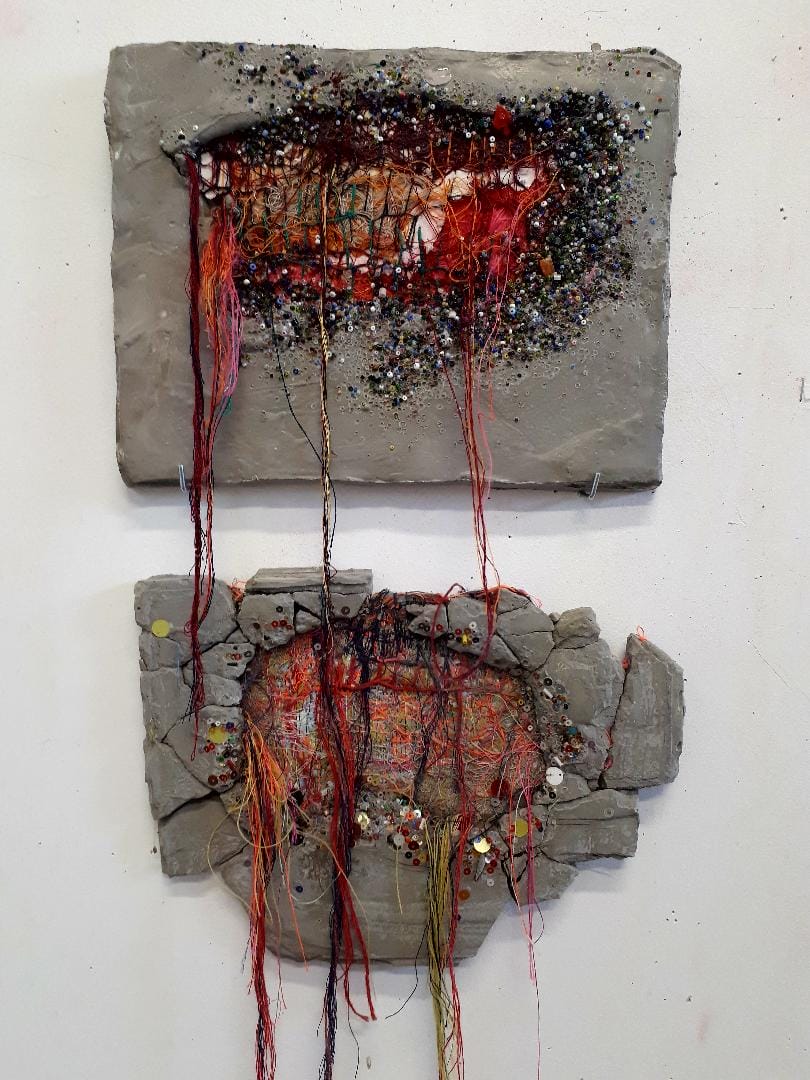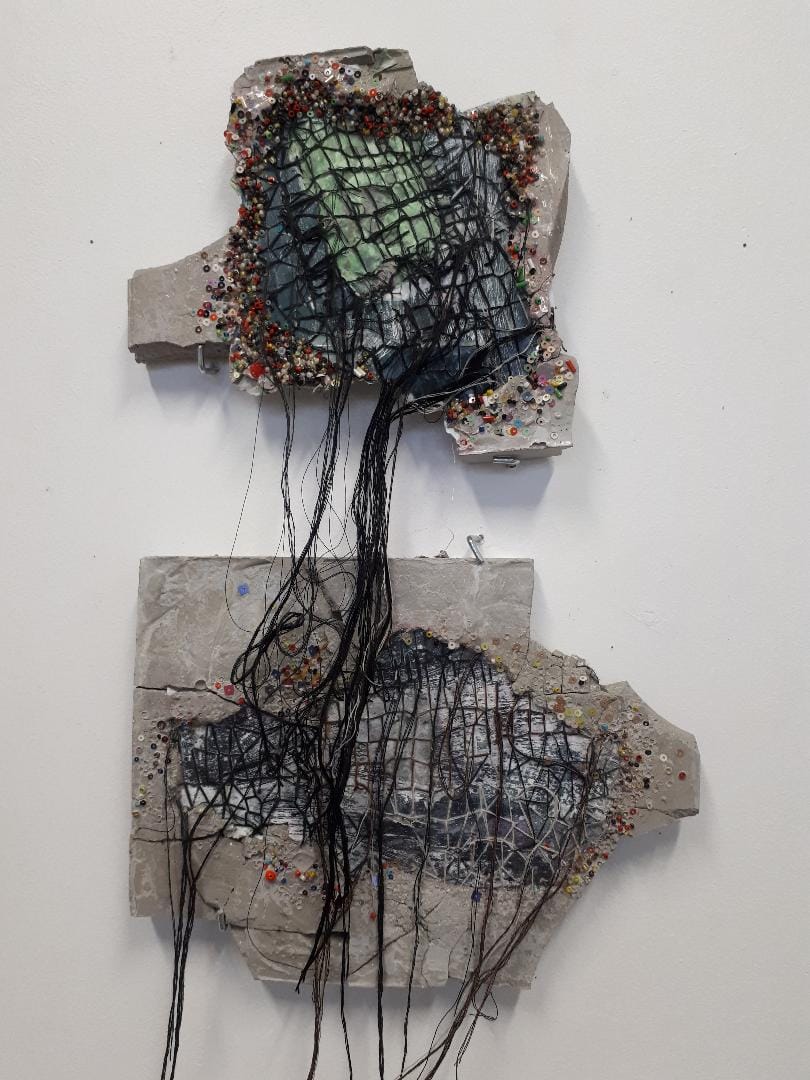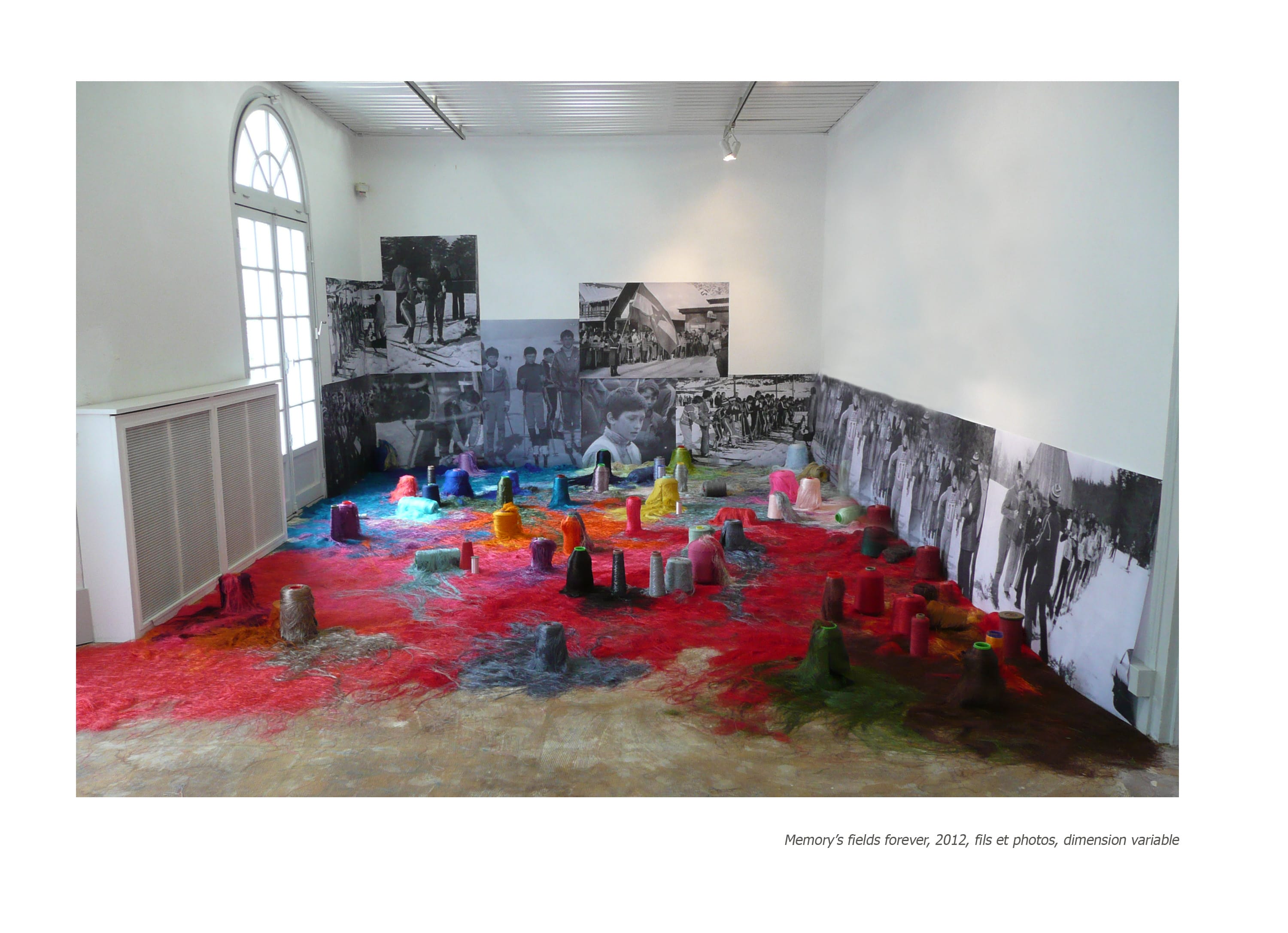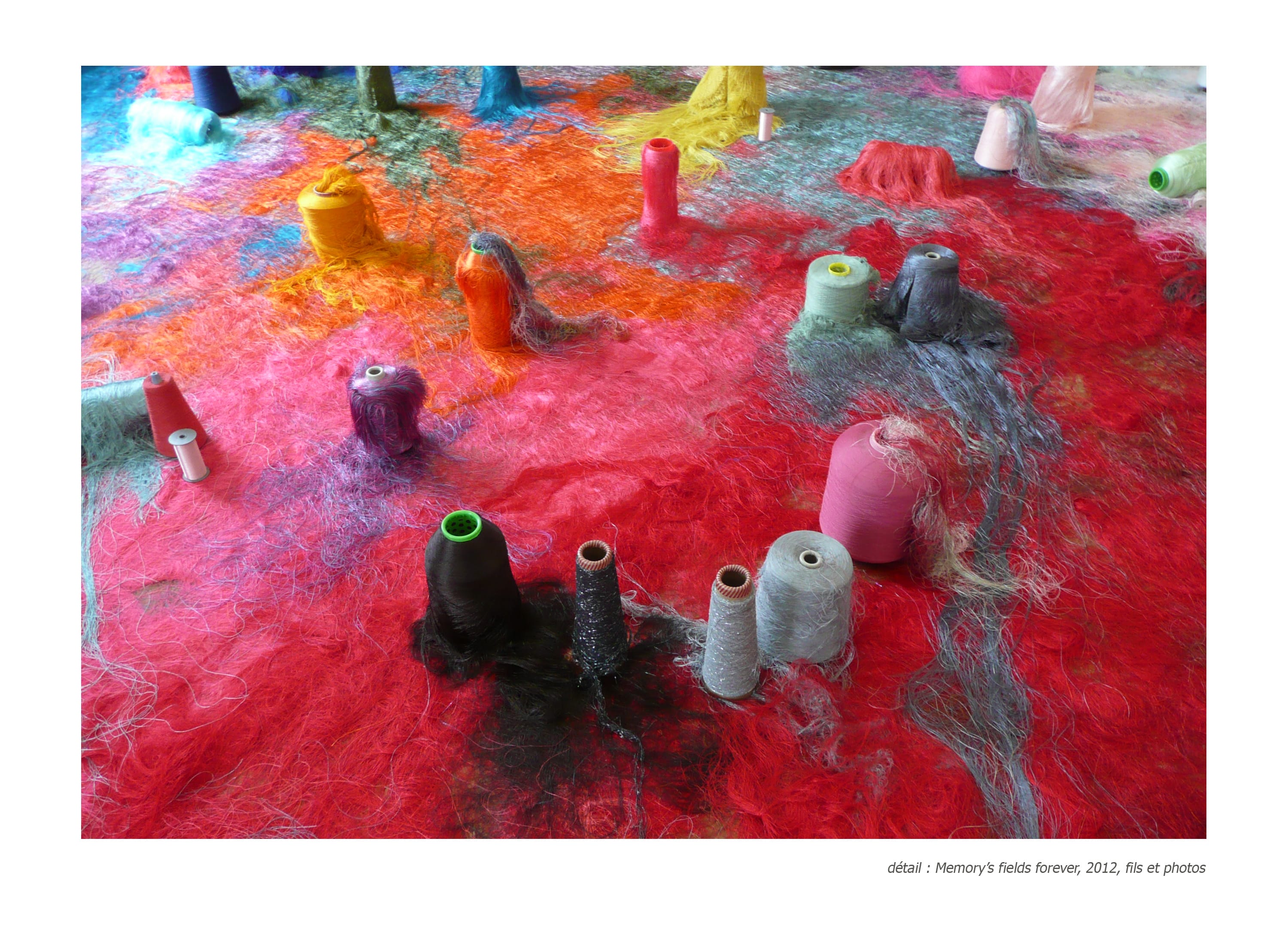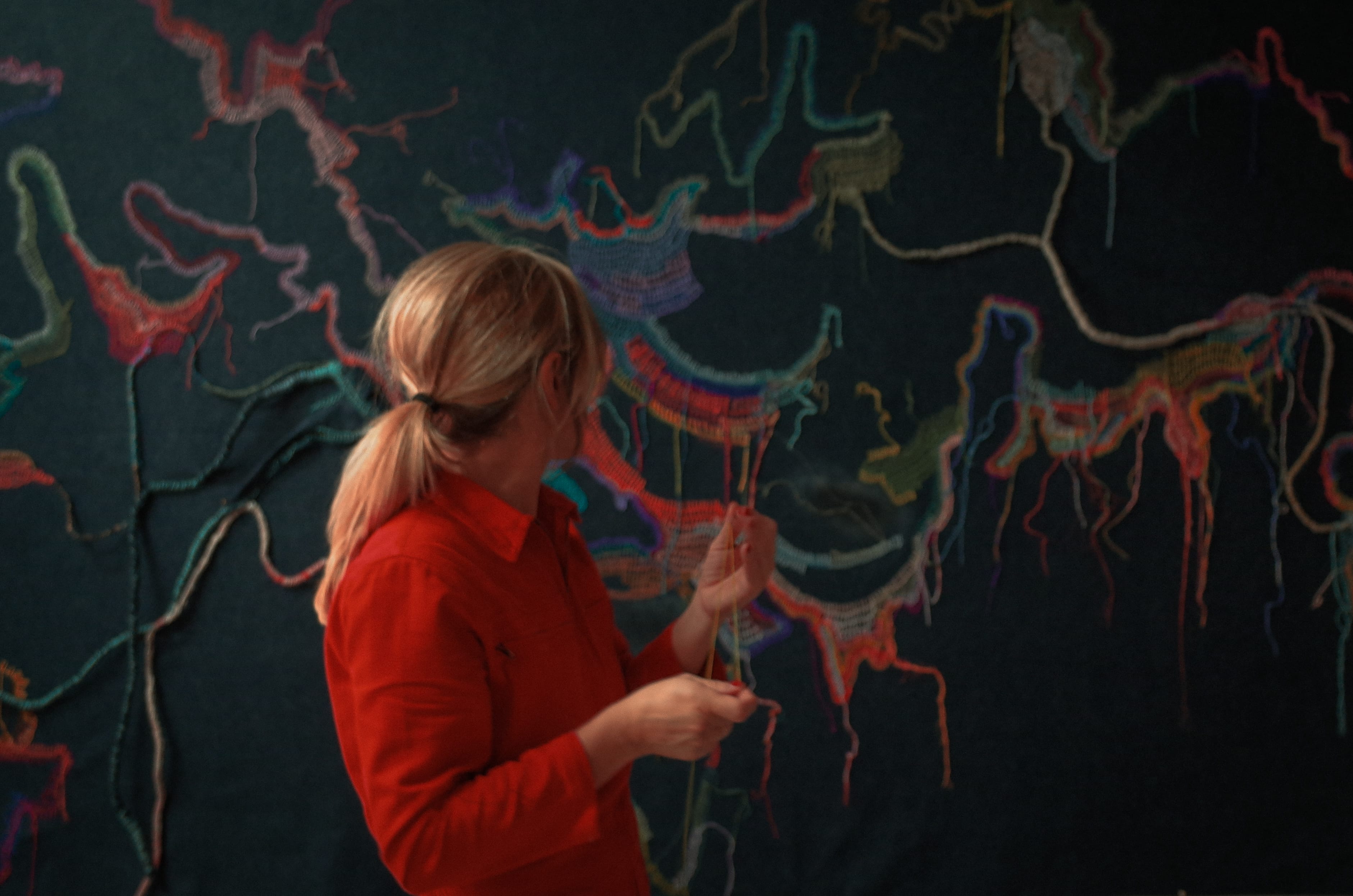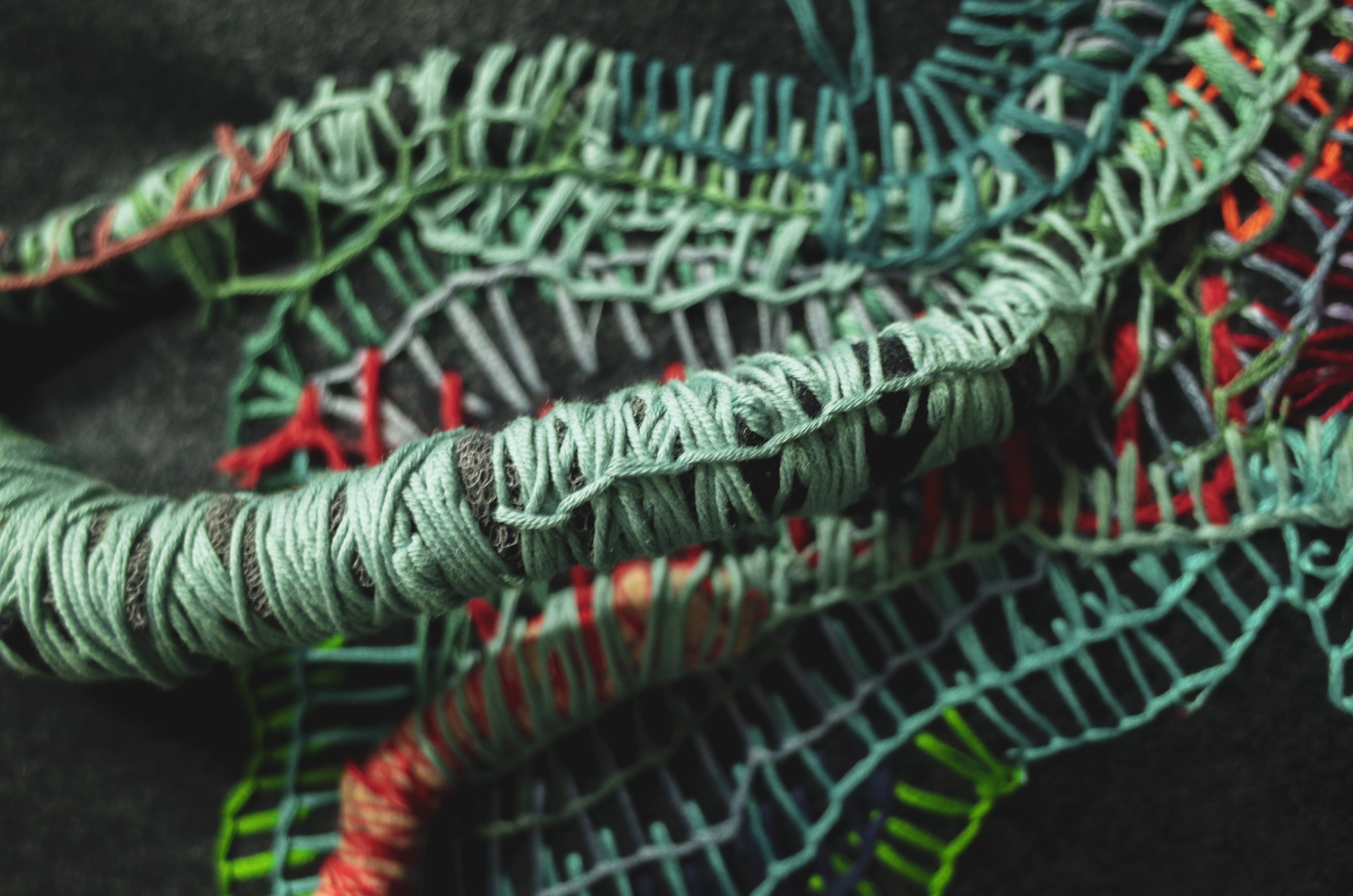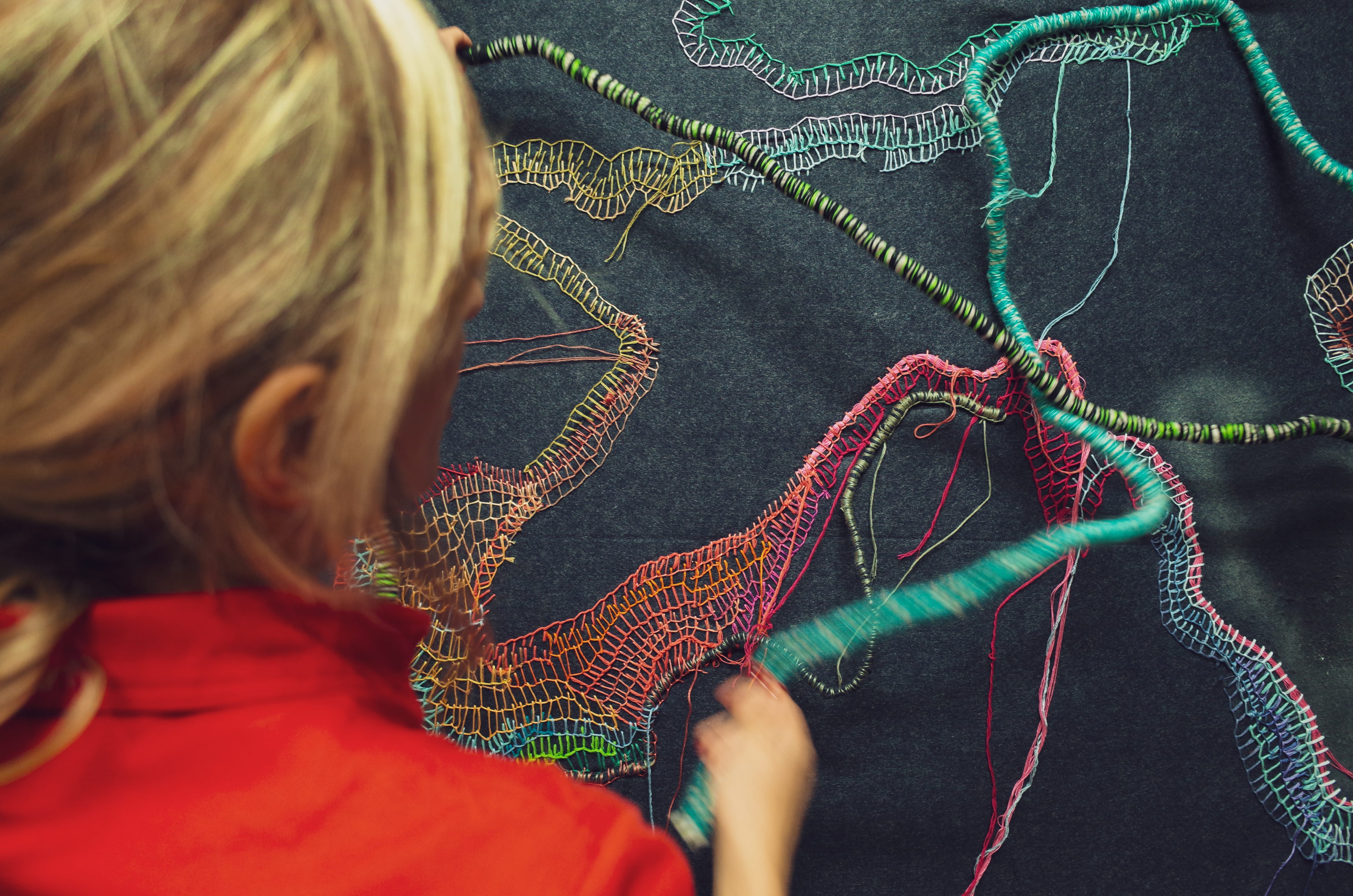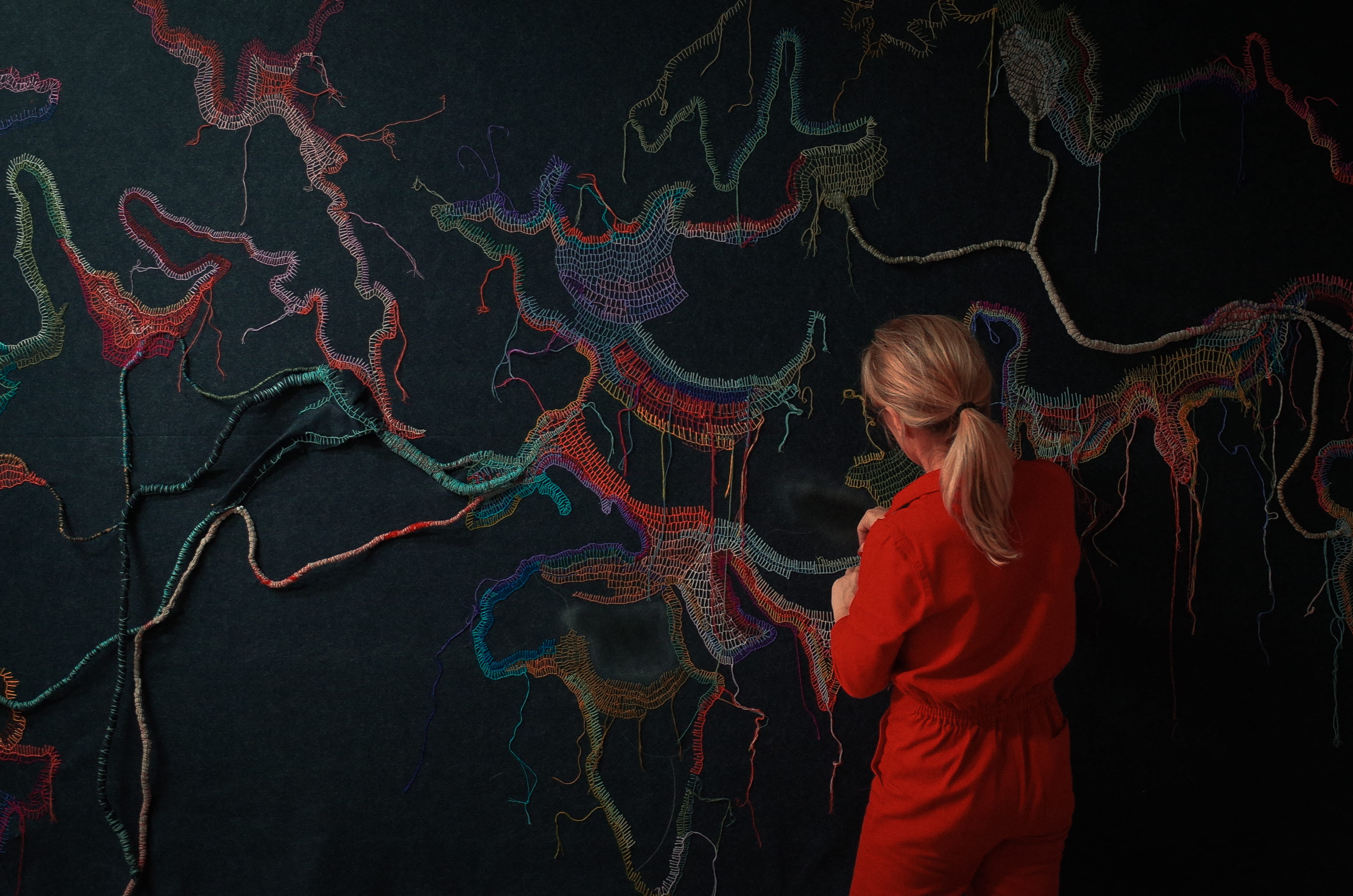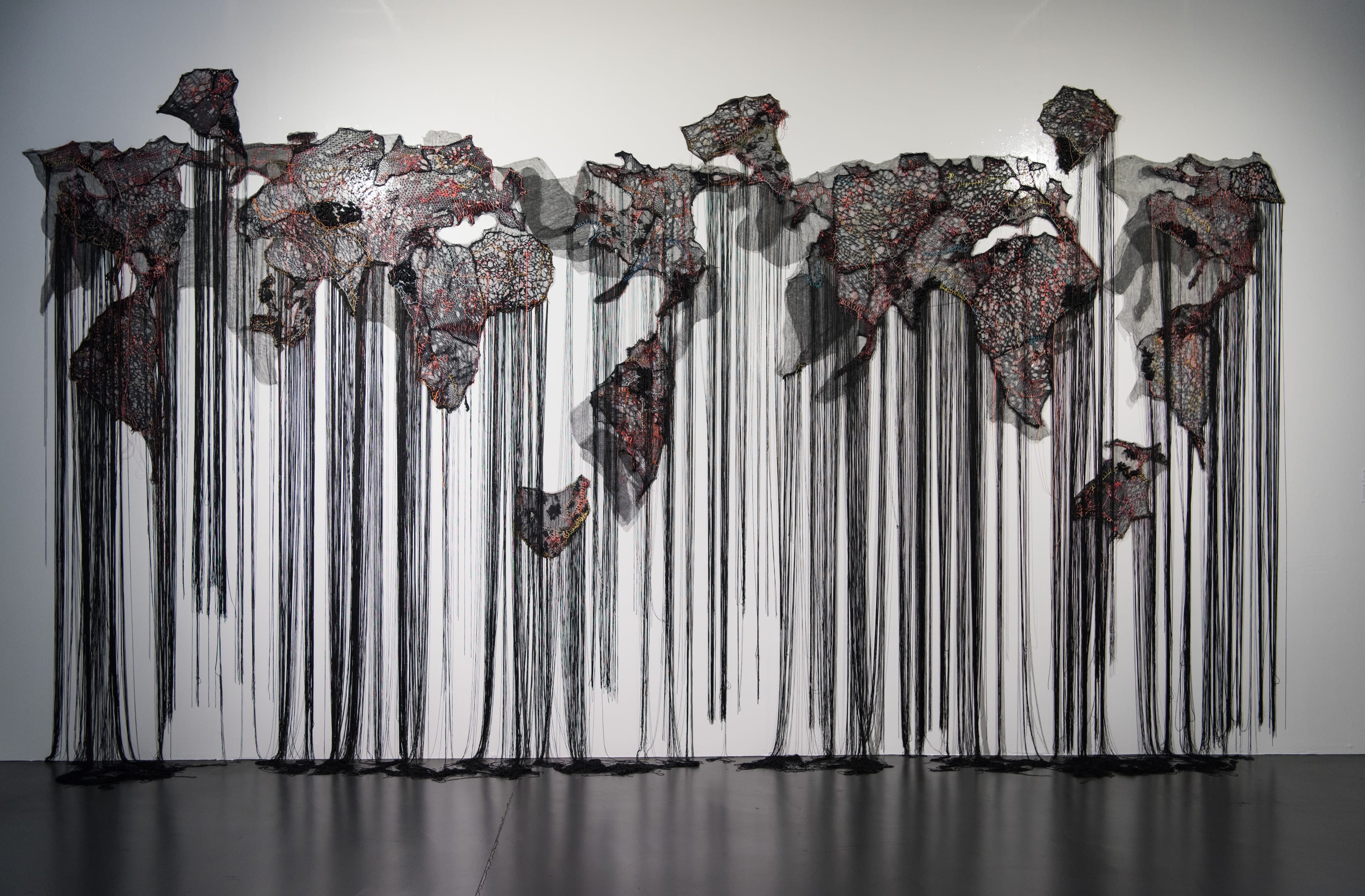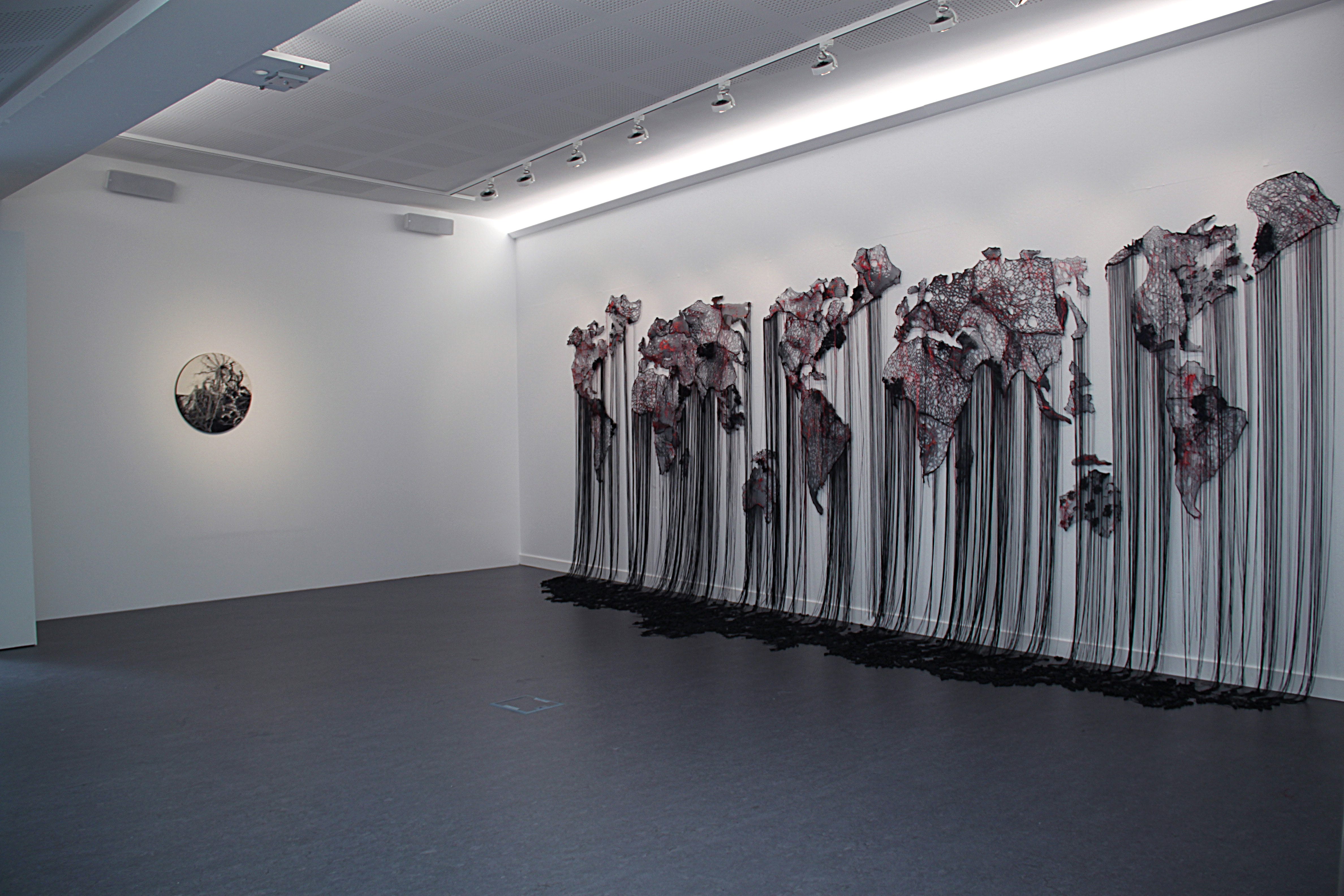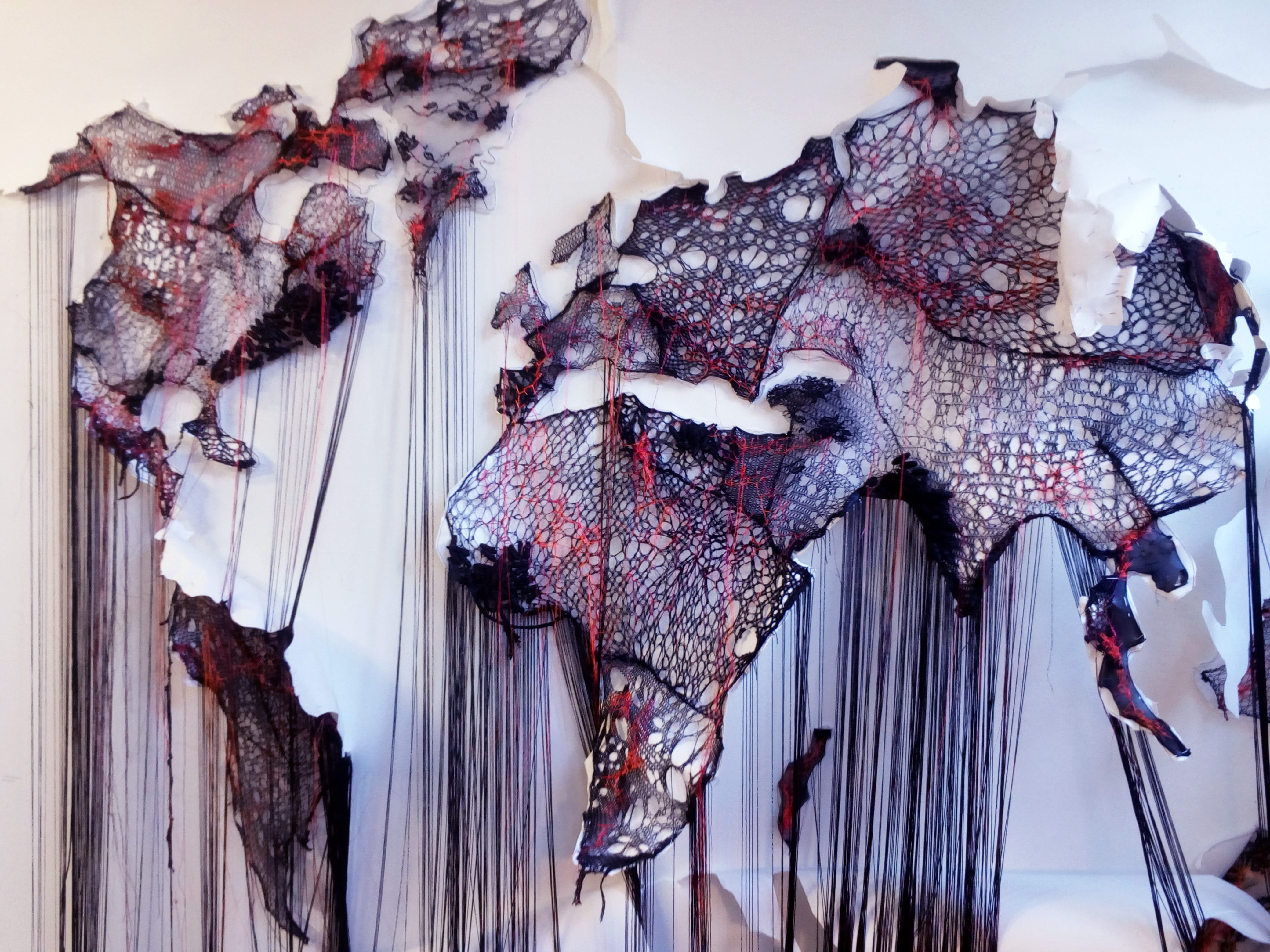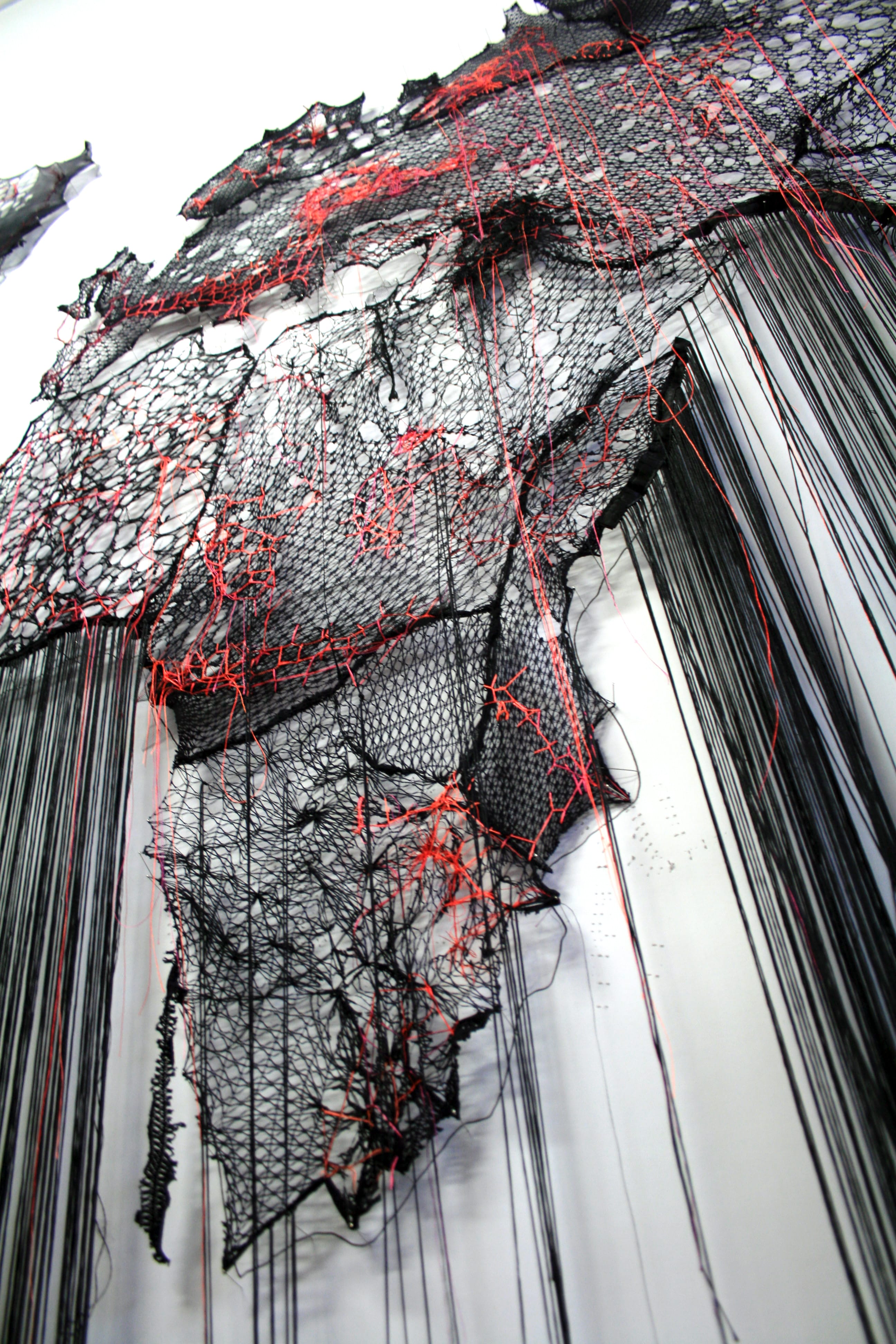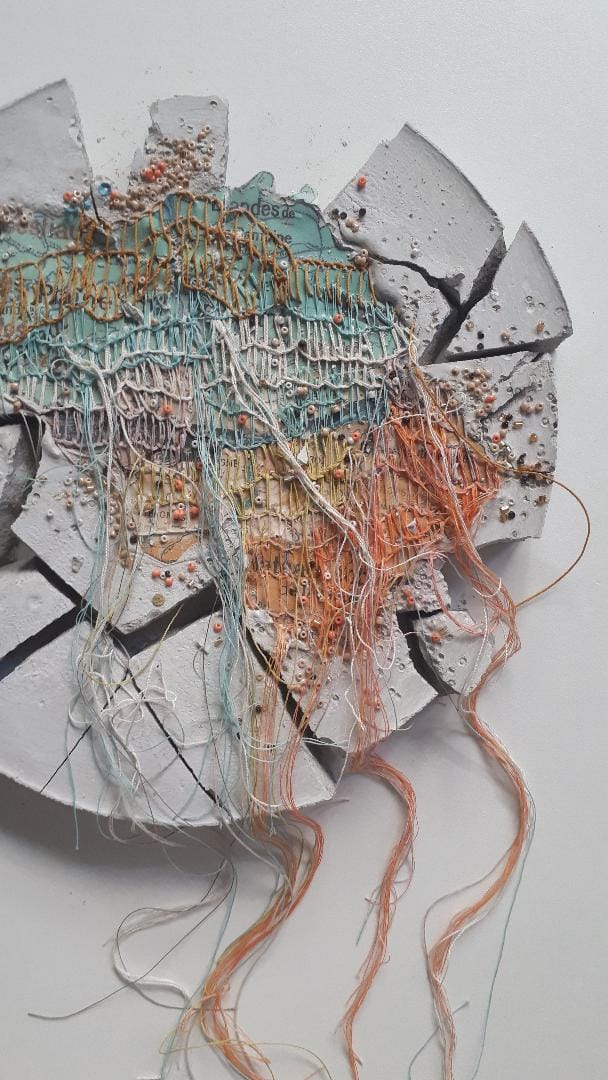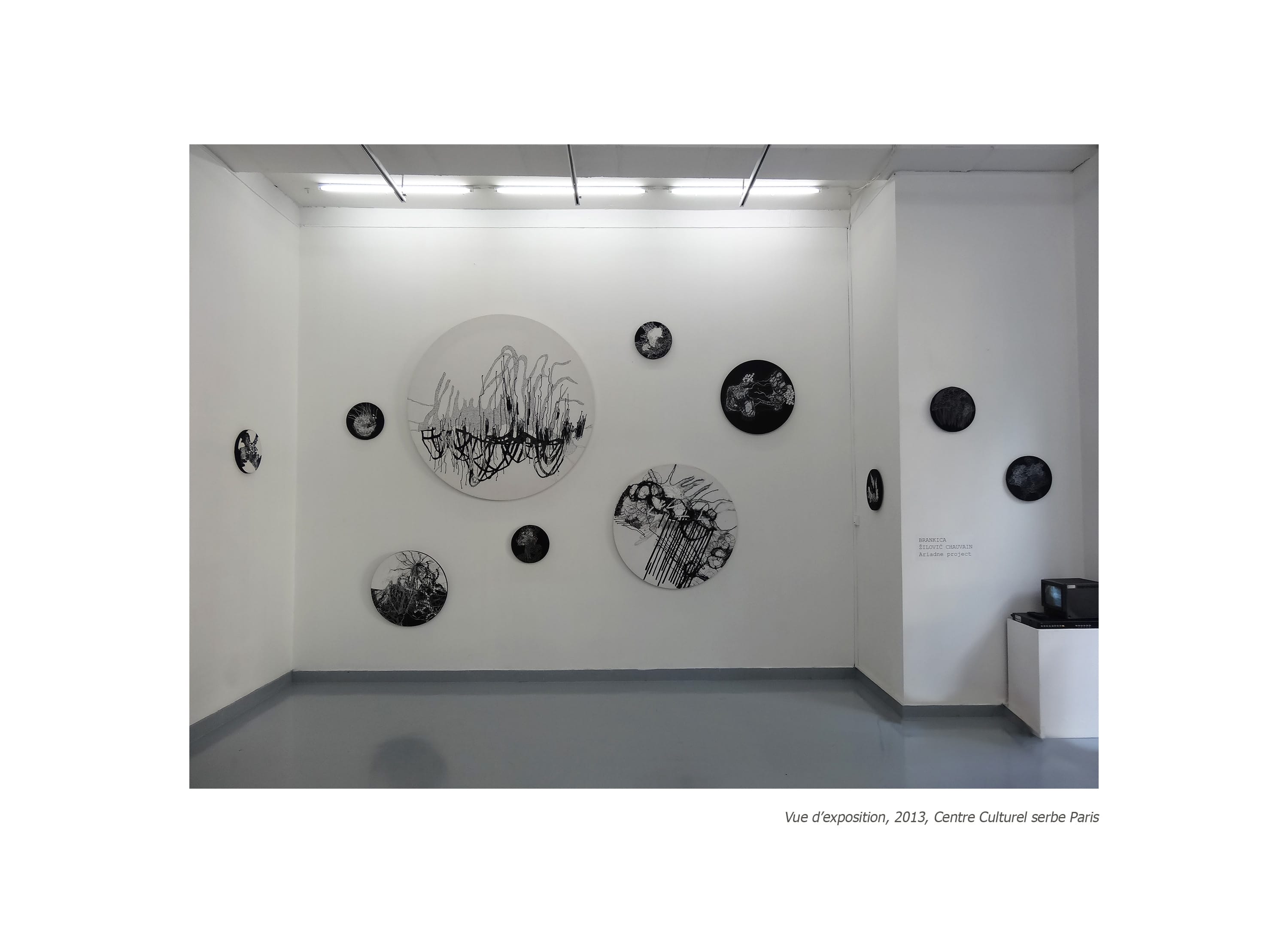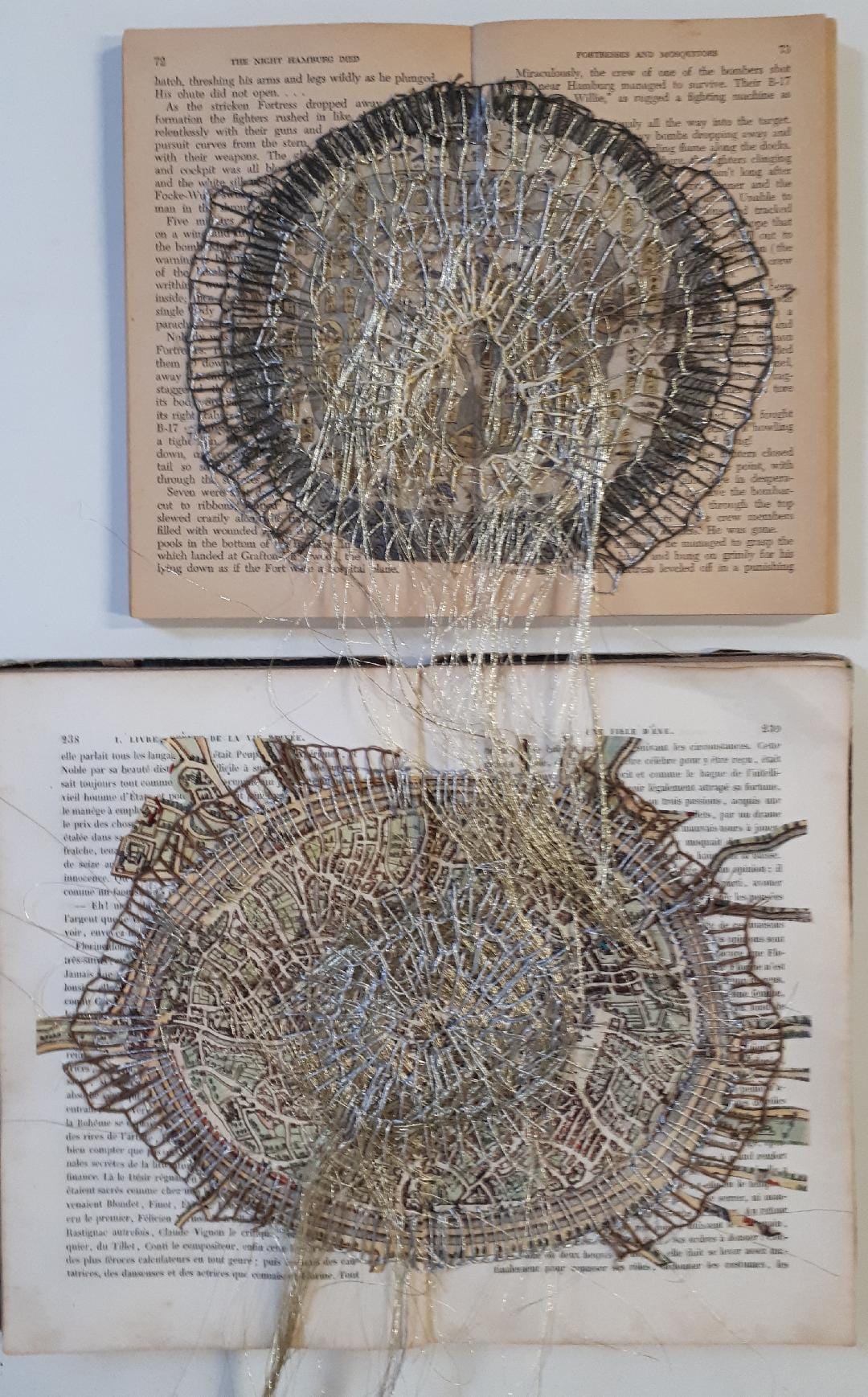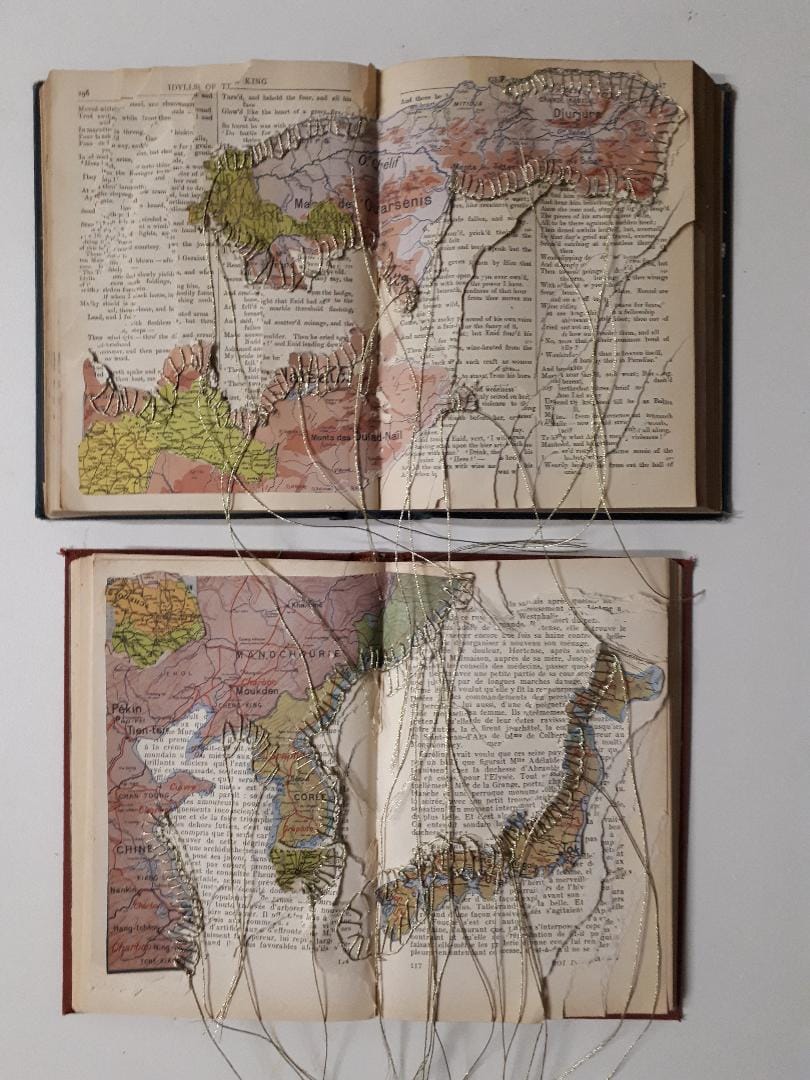Interview with Brankica Zilovic
The published photos were made by Tomasz Namerla and Sandrine Elberg and all works are Laure Roynettegalery curtesy.
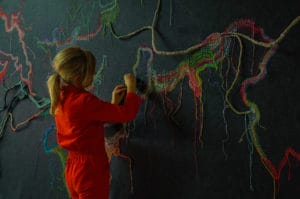
BRANKICA ZILOVIC, born in Serbia, is a French and Serbian visual artist and educator living in Paris. Her ten years lecturing experience has directed her educative focus to creative processes in textile art, fashion design and contemporary art. As an artist she creates through the fields of contemporary art embroidery, installations, multimedia, painting and drawing. Her work has been exhibited booth on national and international level. During last 17 years she has developed different projects with art galleries and institutions in France, Germany, Italy, China, Senegal, USA and Serbia, Art museums, French contemporary art centers, local and regional cultural centers in France (followed by workshops and lectures), fashion magazines, advertising agencies etc.
Currently she is represented by Gallery Laure Roynette in Paris. She obtained a second prize for painting from Painting Award Antoine Marin in Paris and 1st MAUTO Award for installation.
She graduated from the ÉCOLE NATIONALE SUPERIEUR DES BEAUX ARTS of Paris (DNSAP) and from Faculty of Fine Arts in Belgrade.
Currently she is professor at ÉCOLE SUPERIEUR DES BEAUX ARTS of Angers (TALM), University of New School PARSONS in Paris and in Institute Of Applied Art LISAA in Paris.
Website
Brankica, would you call yourself a textile artist?
I prefer define my self simply as a contemporary artist with a strong interest for an independent and prevailing language of Textiles.Textile with his versatility that finally reveals acore drawing, painting sculpture or installation questions. Restricting the Textile art only to his technical, craft-art aspect or traditionally women assigned medium aspect would be “low-down” consideration, and all previous historical endeavors of many artist who pave the way to shift of the his perception and grasp.
Textile artist, instructions, curators, art critics and journalist, all carry a responsibility and potential to enhance the interest and foster a recognition of Textile as autonomous medium in fields of contemporary art. We are all witnessing a wide range of textile and fibers conception and creations, but also the straight to reveal a political, social and ethical inherent meaning of our contemporary enchanted and disenchanted world.
What role does the use of threads and fabric play in your art?
Sometimes I feel like I can see and understand the world only with my hands… in other terms my creative and conceptual approach is always guided and shaped by experience of materiality of the fabric. Every thread is a substance that provide me immense array of possibilities, research directions and critical engagements. Definition of Textile art is constantly moving and it’s hard to be stabilize. I highly appreciate this ambivalent feature of this medium effort lessly joggling between art and craft reading, theoretical and practical knowledge. Thread spans many symbolic and comparative metaphors, transcending or blurring many cultural, gender or identity contexts… I used to say to my students: “thread brings people together, with connecting and reconstructing qualities and features”.
Can you tell us about the series “New Scalps” and embroidered books from “Totem Revenants”?
Series ”New Scalps” relate to my father, who passed away in 2013. New scalps are actually brain cancers imagery representations that revels the beauty of brain neuronal systems that calls into cosmology of our biological body. Sometimes the most turbulent and painful intimate moment needs to be urgently translated into something subliminal that revels certain universal questioning.
Embroidered books from “Totem Revenant” are again story-telling related to father pattern, recent autobiographic geopolitical conflict, ideology, disillusionments and religion related to my father but also transmitted as legacy to me as grid, as a burden or a precious heritage, but definitely a huge and think material for multiply artistic considerations.
How important is the experimentation of techniques and materials in your works?
Often use as tactile form of expression, communication and application, textile materials are objects and structures that seeks to be understood, with their own system of language, their potentials and limits, with multiples meanings and interpretations. Therefore experimentation is the best way to capture all that sensitive and tangible ways of meandering creative navigations. There is something very exiting about Textile practice, ordinary and extraordinary almost genius in the same time. When I start exploring and experimenting rich potential of textiles and threads in my first painting & embroidery hybridizations I felt so special and rebellious in the same time. If I didn’t one day started simply experimenting with embroideries that operates as a conceptual strategy of drawing, I would probably never become that much involved in Textile medium as today. So the place of experimentation and unfamiliar innovation is essential in my art.
In a new work, do you start from the material, around which you then develop the idea of the subject, or do you start from the subject and then you choose techniques and materials?
Both leads are frequently developed and challenged… Sometimes the pure concept could guides me to the textile or combine techniques solutions, and vise-versa direct textile approach will raise a creative and subversive strategy of questioning! I have no precise expectations or assumptions regarding the process, but I certainly have a definition of my dialectic.
“Pagan Man”, 2015, 180cm,tecnique mixte, copyright Brankica Zilovic
What is the connection between your art and Serbia?
All my artistic attempts and intentions are co-related with my cultural, identity background. Central question in the most of my art work propositions are articulated around de Borderlines, individuals and collectives! By channeling my creative attempts across the map-tracing and cartographies, my aim is to unravel the question of border, frontiers, dislocations, spoliations and reconstructions, weather individual or collective! My deep inner being is constantly searching and craving fora territory to live, the place that I refuse to call Diaspora,hard to accept or to identity, place in-between, No-man’s Land. This territory of senses acts as a cartography membrane, dissociating the reality that runs through me from the one that penetrates me, so that a personal geography can replace a political geography, thus affirming a fragility that extends beyond as, beyond appearances.
Is there an underlying theme around which all your works revolve?
My work is at the crossroads of individual considerations and historical and political concerns with the overall aesthetic resulting abundant form of playfulness. My personal cartography paradoxically, leading nowhere else than in the meanders of the human psyche, that reflects territories and spaces as temporal allusions. Indeed, repetition, accumulation and labor emphasize a daily demand, if not an obsession where time expands and displays an expiatory dimension, as if it were a question of warding off the demons and curses of the past by substituting memory for the mechanization of the gesture.
Yet forgetfulness, loss, or degeneration, which drives from my work, are nothing less than calls for new beginnings. Hence the need to grasp my compositions as the expression of a form of optimism, an optimism that would remain latent, perhaps paradoxical, an optimism that would welcome life and its possibilities rather than its regrets.
What, in your opinion, are the artistic, aesthetic and stylistic differences between small and large (textile) art works?
Large-scales wall installation, tree-dimensional, or small miniature scales compositions are all interesting to approach with its variety of proliferation and expression! There is myriad of visual possibilities and rich innovative and laborious way to approach both scales compositions… it’s no surprise that contemporary textile artists showcase the vast differences of “possible” when dealing with fabric, thread, and yarn.
How has your work evolved in terms of style and expression? What are the differences between the first and most recent works?
It’s hard to explain the evolution, the transformation or serious “shifts” in my work, but it’s definitely recognizable. Numerous phases depicting a strong heterogeneous character of my work.
I’ve been observing my evolving journey like effortlessly exploring and experimenting through cycles as analogous to my personal social or emotional development and how essential is to remain deeply connected to your own language.
What are you working on right now? Do you want to tell us about your current projects?
I have just finished my new 6 meters long wall installation “Never Innocent”for the next group show “Weave your Memory”. This wall embroidery installation once again incite us to the deconstruction and demystification of the map as necessary to identify the power games and to make the physical and mental efforts to rethink and embrace the world again … In this world of quasi-synaptic connections held by the stitches, and straight out of the felted depths like a spinal ganglion, elastic and organic composition sends us to the perception itself which seems to pierce its template and question his texture, never innocent.
“Never innocent” summons the challenge of rewriting these paths and strata of memories that remain anchored in our memory. These paths, these knotted thoughts, intertwined, inscribed, fixed, bring out emotions and suggest the desire for a displacement. From here comes a world where borders are in motion and fade to give way to a new order. A reversal takes place in this map, which solicit the desire to touch and the world that is upset and exceeds us. Like an “autonomous organism”, this one is the metaphor of the man who continues to seek solutions of survival and struggle to inhabit and create his living environment.
Galleria Immagini
- Photo 1“Never Innocent – detail”, installation, 6 m, ph. Tomasz Namerla, copyright BrankicaZilovic
- Photo 2“Never Innocent – detail”, installation, 6 m,ph. Tomasz Namerla, copyright BrankicaZilovic
- Photo 3 “Never Innocent – detail”, installation, 6 m,ph. Tomasz Namerla, copyright BrankicaZilovic
- Photo 4 “Political Fold”, 2017, 230 cm x 600 cm, thread, textile, copyright BrankicaZilovic
- Photo 5 “Political Fold”,vieux Expo, 2017, 230 cm x 600 cm, thread, textile, copyright BrankicaZilovic
- Photo 6 “Political Fold – detail”, 2017, 230 cm x 600 cm, thread, textile, copyright BrankicaZilovic
- Photo 7 “Political Fold – detail”, 2017, 230 cm x 600 cm, thread, textile, copyright BrankicaZilovic
- Photo 8 “Concrete Mapping”, copyright BrankicaZilovic
- Photo 9 “Concrete Mapping – detail”, copyright BrankicaZilovic
- Photo 10 Vue d’exposition, 2013, Centre CulturelSerbe Paris, copyright BrankicaZilovic
- Photo 11 Copyright BrankicaZilovic
- Photo 12 Copyright BrankicaZilovic
